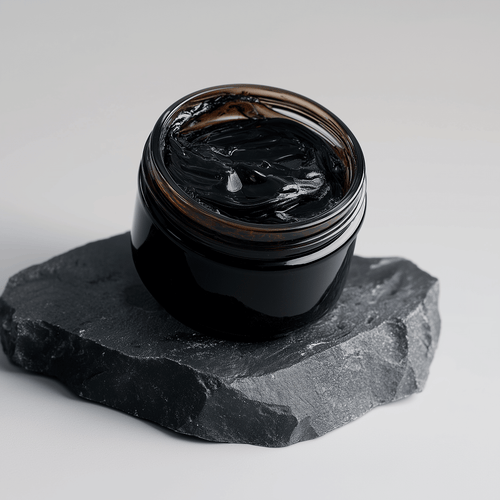
Shilajit Side Effects: Everything You Need to Know
Shilajit is a natural supplement that has been used for centuries in Ayurvedic medicine. It is renowned for its numerous health benefits, ranging from boosting energy levels to improving mental clarity.
However, like any supplement, it's important to understand how to use it safely. Being aware of potential side effects is equally essential. This article aims to provide you with a comprehensive guide on these aspects.
We will also explore the experiences of other Shilajit users. Their insights can give you a clearer picture of what to expect. Additionally, we’ll share tips on where to buy Shilajit and how to evaluate its quality.
So, whether you are considering using Shilajit or simply want to learn more about this fascinating supplement, read on. We hope you find this article useful and informative.
Table of Contents
- What Is Shilajit?
- The Origins and Traditional Use of Shilajit
- Key Components and Health Benefits
- How to Use Shilajit Safely
- Recommended Dosages and Forms of Shilajit
- Precautions and Contraindications
- Shilajit Side Effects
What Is Shilajit?
Shilajit is a dark brown resin that forms from the decomposition of plant material over thousands of years. It is primarily found in the rocky regions of the Himalayas, where specific climatic conditions contribute to its formation.
In Ayurvedic medicine, Shilajit has been praised for centuries as a potent remedy for various ailments and a means to improve overall health. It contains high concentrations of fulvic acid, minerals, and other bioactive compounds that contribute to its healing potential.
Modern use of Shilajit has spread globally. It is now widely used as a dietary supplement, particularly in Western countries, to support physical and mental well-being. Many people take it for its reputed effects on energy levels and cognitive function.
While popular, users must understand proper dosages. Excessive use or consuming low-quality Shilajit can lead to undesirable side effects, making it essential to choose a reliable source.
The Origins and Traditional Use of Shilajit
Shilajit originates in the mountainous regions of Asia, primarily the Himalayas. It has a rich history as a medicinal substance in these areas.
Traditionally, it was used to combat altitude sickness, and people believed it enhanced physical endurance. In Ayurvedic practice, Shilajit is often considered a “rasayana,” a term referring to rejuvenation and strengthening of the body and mind.
It was commonly dissolved in milk or water and consumed as part of various health rituals. Today, Shilajit is primarily used as a daily supplement or as part of specific treatments.
The age-old traditions surrounding Shilajit continue to inspire many people seeking its natural benefits.
Key Components and Health Benefits
The unique composition of Shilajit makes it a powerful supplement. It contains more than 84 minerals in natural ionic form, which are easily absorbed by the body.
One of its main components is fulvic acid, which has anti-inflammatory and antioxidant properties that help combat cell damage and promote cellular energy production.
Other significant elements in Shilajit include:
- Humic acids: Support digestion.
- Dibenzo-alpha-pyrones: Enhance a healthy immune response.
- Vitamins and amino acids: Contribute to overall vitality.
Shilajit offers numerous health benefits. It may reduce fatigue and enhance mental clarity. Additionally, it can aid in muscle building, making it valuable for athletes.
There is also evidence suggesting it helps regulate blood sugar levels, which could be beneficial for individuals at risk of diabetes. When used correctly, Shilajit can provide significant health advantages worldwide.
How to Use Shilajit Safely
Shilajit offers various health benefits, but safety is paramount. Start with a low dose to allow your body to adjust. Pay attention to how your body reacts.
Shilajit is available in different forms, such as powders, resins, and capsules. Always prioritize high-quality products. Verify the reliability of the supplier and read user reviews.
Here are some tips for safe use:
- Start with a low dose: Gradually increase as needed.
- Consult a doctor: Especially if you have existing health conditions.
- Follow instructions: Stick to the recommended dosage.
- Stay hydrated: Drink plenty of water for better absorption.
It is also crucial to consider how Shilajit interacts with other supplements or medications you may be taking. This helps avoid unwanted side effects and interactions. By being cautious, you can safely enjoy the benefits of Shilajit.
Recommended Dosages and Forms of Shilajit
The appropriate dosage of Shilajit depends on its form and individual usage. Start with the dosage often recommended on the product packaging.
Capsules are popular for their convenience. On average, one capsule contains around 300–500 mg of Shilajit. Most users take one or two capsules daily.
Other forms, such as resin and powder, are mixed with warm liquids. For beginners, 100–200 mg per day is a common starting point.
Recommended forms include:
- Powder: Flexible dosing; mix with drinks.
- Capsules: Precise and easy to use.
- Resin: Traditional form with pure content.
Avoid overconsumption, as this can cause side effects and reduce effectiveness. Always adhere to the recommended dosages.
Precautions and Contraindications
There are several precautions to consider before using Shilajit. Although it is a natural supplement, it may not be suitable for everyone.
People with allergies should be cautious about potential reactions. If you are sensitive to certain minerals, consult a doctor before use.
Pregnant women and breastfeeding mothers are advised to avoid Shilajit, as there is insufficient evidence on its effects during pregnancy and nursing. Avoid unnecessary risks.
Individuals with chronic conditions, such as heart problems or high blood pressure, should seek medical advice first. Shilajit may influence the effects of other medications.
Lastly, children and adolescents should not use Shilajit unless explicitly recommended by a doctor. Be mindful and careful. Your health and well-being come first when introducing new supplements.
Shilajit Side Effects
While Shilajit is generally considered safe, side effects can occur. Awareness of possible reactions is essential. Side effects are typically mild but can vary depending on individual sensitivity.
The most common side effects include gastrointestinal issues, such as nausea and diarrhea. Some users also report dizziness or discomfort. These symptoms are usually mild and subside as the body adjusts.
Other potential side effects may include:
- Allergic reactions: Such as skin rashes or itching.
- Blood pressure changes: Especially when combined with other medications.
- Metabolic disturbances: Such as changes in blood sugar levels.
To minimize these side effects, start with a low dosage and gradually increase. Stay hydrated and take Shilajit on an empty stomach unless otherwise advised.
When in doubt, always consult a healthcare professional. Personalize your approach to supplement use to minimize side effects and maximize benefits.





